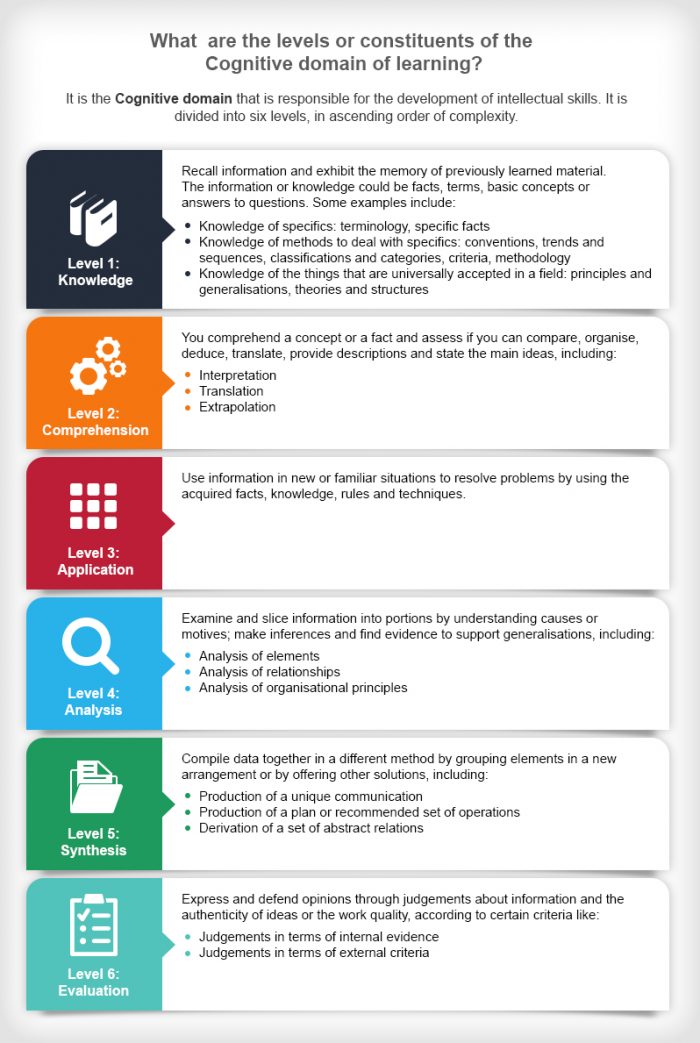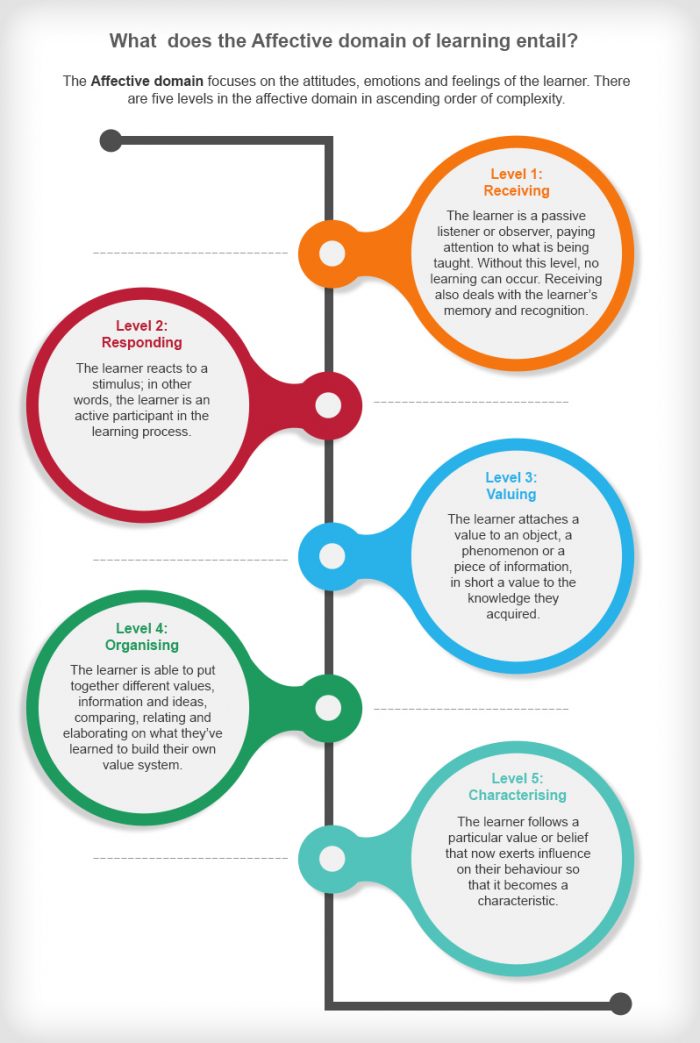Bloom’s Taxonomy (BT), proposed by Benjamin Bloom, is one of the key theoretical frameworks for learning popularly applied in Instructional Design. Bloom’s Taxonomy (BT) and the Revised Bloom’s Taxonomy (RBT) are used in eLearning to craft the learning architecture of an eLearning course.
In this blog, I will take you through the basics of Bloom’s Taxonomy and its three domains of learning. Additionally, I will outline the various levels in the first two learning domains (namely, Cognitive and Affective).
What is the Bloom’s Taxonomy?

Bloom’s Taxonomy, proposed by Benjamin Bloom, is a theoretical framework for learning and identifies three domains of learning:
- Cognitive: Skills in the Cognitive domain revolve around knowledge, comprehension and critical thinking on a particular subject. In traditional forms of education, classrooms or online learning, the emphasis is more on the skills in this domain, particularly the lower-order objectives.
- Affective: Skills in the Affective domain describe the way people react emotionally and involve learning that happens at the behavioural level. Affective objectives aim to increase the awareness and improve attitudes, emotions and feelings.
- Psychomotor: The Psychomotor domain deals with skill-based learning. Skills involve the capability to bodily manipulate tools or instruments similar to a hand or a hammer. Psychomotor objectives usually focus on change or development in behaviour and skills.
What are the levels or constituents of the Cognitive domain of learning?
It is the Cognitive domain that is responsible for the development of intellectual skills. It is divided into six levels, in ascending order of complexity.
Level 1: Knowledge
Recall information and exhibit the memory of previously learned material.
The information or knowledge could be facts, terms, basic concepts or answers to questions. Some examples include:
- Knowledge of specifics: terminology, specific facts
- Knowledge of methods to deal with specifics: conventions, trends and sequences, classifications and categories, criteria, methodology
- Knowledge of the things that are universally accepted in a field: principles and generalisations, theories and structures
Level 2: Comprehension
You comprehend a concept or a fact and assess if you can compare, organise, deduce, translate, provide descriptions and state the main ideas, including:
- Interpretation
- Translation
- Extrapolation
Level 3: Application
Use information in new or familiar situations to resolve problems by using the acquired facts, knowledge, rules and techniques.
Level 4: Analysis
Examine and slice information into portions by understanding causes or motives; make inferences and find evidence to support generalisations, including:
- Analysis of elements
- Analysis of relationships
- Analysis of organisational principles
Level 5: Synthesis
Compile data together in a different method by grouping elements in a new arrangement or by offering other solutions, including:
- Production of a unique communication
- Production of a plan or recommended set of operations
- Derivation of a set of abstract relations
Level 6: Evaluation
Express and defend opinions through judgements about information and the authenticity of ideas or the work quality, according to certain criteria like:
- Judgements in terms of internal evidence
- Judgements in terms of external criteria

What does the Affective domain of learning entail?
The Affective domain focuses on the attitudes, emotions and feelings of the learner. There are five levels in the affective domain in ascending order of complexity.
Level 1: Receiving
The learner is a passive listener or observer, paying attention to what is being taught. Without this level, no learning can occur. Receiving also deals with the learner’s memory and recognition.
Level 2: Responding
The learner reacts to a stimulus; in other words, the learner is an active participant in the learning process.
Level 3: Valuing
The learner attaches a value to an object, a phenomenon or a piece of information, in short a value to the knowledge they acquired.
Level 4: Organising
The learner is able to put together different values, information and ideas, comparing, relating and elaborating on what they’ve learned to build their own value system.
Level 5: Characterising
The learner follows a particular value or belief that now exerts influence on their behaviour so that it becomes a characteristic.

As we know, Instructional Design is a system of developing meaningful, effective and well-structured instructions using learning objectives, well-defined teaching strategies, evaluation and systematic feedback. It uses scientific principles as a basis to create learning experiences.
Bloom’s Taxonomy (BT) is used by Instructional Designers globally to define the required cognition level; and its extension Revised Bloom’s Taxonomy (RBT) is used in eLearning to map the content type to the ideation or multimedia enablement of an eLearning course.
I hope this blog provides cues on using Bloom’s Taxonomy that you can use to create the learning architecture of your eLearning courses. If you have any queries, do contact me.
Need More?
Want more insights on Bloom’s Taxonomy (BT) and how can it be used to design eLearning courses? Schedule a call with our Solutions Architecting Team.
Check the course on Introduction to Instructional Design Fundamentals from here.
